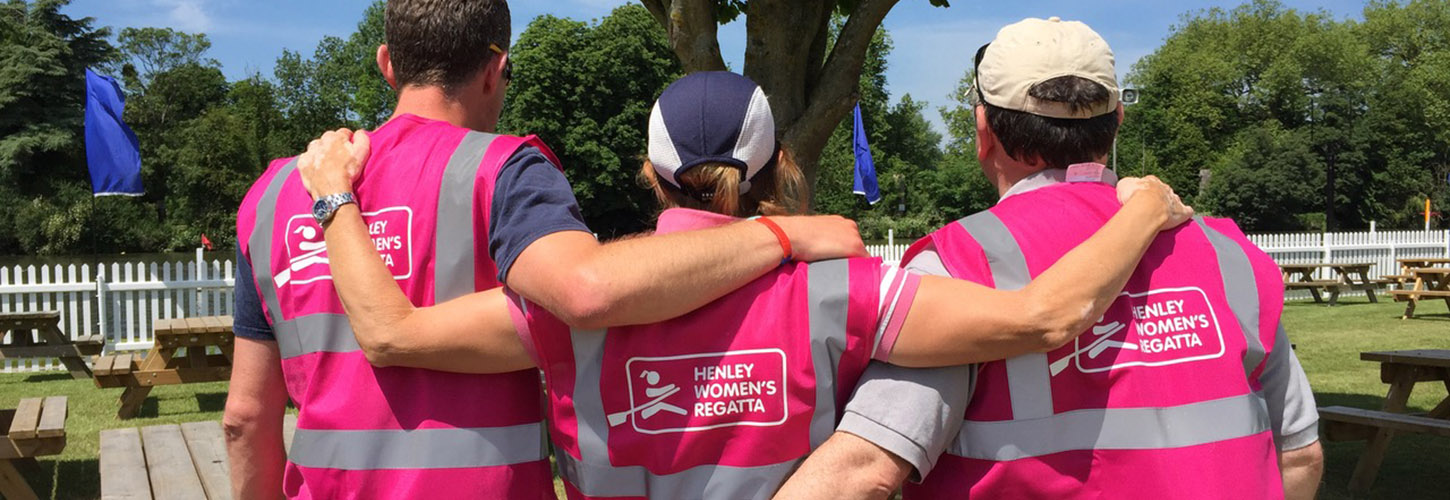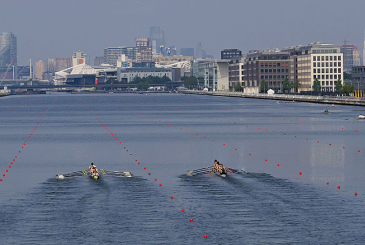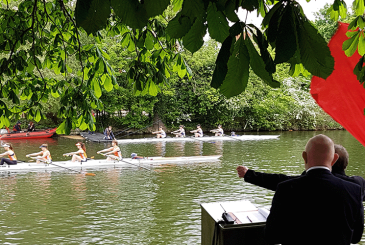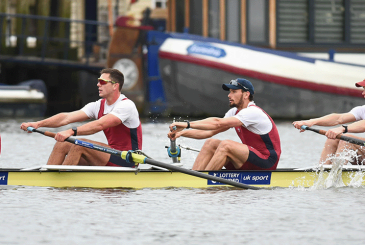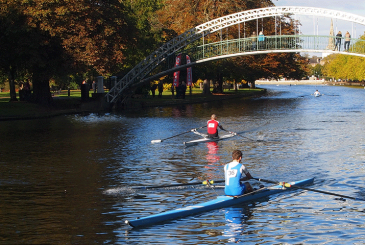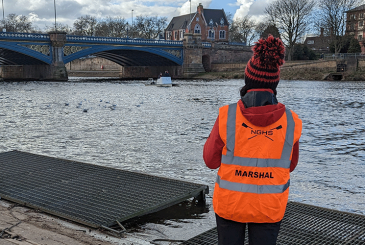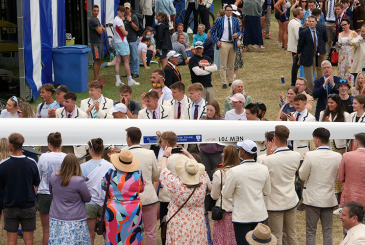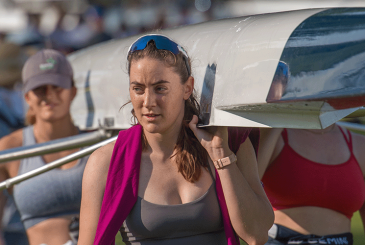Henley Women’s Regatta (HWR) is the pinnacle of female rowing in the United Kingdom and over 1,500 athletes travel from across the world to compete there every year. Alannah Burdess from Junior Rowing News sat down with Jo Wilby, former Site Manager for this major event, to discuss exactly what goes into this mammoth task.
The dream candidate
Within less than five minutes of speaking to Jo, it becomes obvious why she was so good at the role. “I was talked into it.” She laughed when I asked her why she took it on. Jo has run the Upper Thames RC Master’s Women squad for many years and her organisational skills combined with extensive local knowledge made her a natural fit. Add to this a distinguished career as a fellow in research and development for multi-national conglomerate Proctor and Gamble and it’s clear that she had all of the technical skills needed.

Logistical capability is only part of the puzzle though. As the single point of contact for the site, Jo is also an excellent communicator with nerves of steel. Everyone comes to the Site Manager for everything; contractors, the land owners, other volunteers, traders and club representatives. She must deal with all issues that arise and fast. “For example, boat loaded trailers ignoring the traffic flow and grinding all traffic to a standstill on the narrow lanes,” she sighed. “You just have to think constantly about how you are going to resolve the problem that’s being thrown at you, big or small.”
Process equals progress
Though the site build itself only begins in the week of racing, the process starts months in advance. In January, Jo registers the event with Wokingham Borough Council.
Next comes the important task of having a kick-off meeting with The Copas Partnership, HWR’s major sponsor. This relationship is crucial to the regatta’s success as Copas own the land where the regatta takes place. They also store some of the equipment throughout the year, including the boat racking, generators, notice boards and signage. “Copas really are excellent partners,” said Jo, who has only good things to say about these long-time supporters of the regatta.
The regatta’s ‘shopping list’ of infrastructure goods is lengthy, but changes at least slightly from year to year. Well in advance, Jo and others will have ordered things like tents, communication caravans, telecoms and radio, and drone and media networks. With a wide variety of equipment coming on site, Jo was instrumental in pioneering a process whereby an architect (also a volunteer) helps to design the site plans to optimise space and storage.
From planning to action stations
“When I took over, there wasn’t a clearly documented structure for how to plan or run this aspect of the regatta,” explained Jo. “Combine that with the fact that this was my first ever substantial volunteering role, and I could see I had a serious challenge in my hands.”
There are numerous details that Jo carefully plans and implements. Competitors are probably completely unaware of most of these, such as how many metres away the start tent must be from the control tent.
The build begins on the Monday of regatta week. The process starts with marking out the site for racking, which changes year on year depending on the number of entries across varying boat classes.
Long-term legacy
Jo has made a lasting and significant contribution to Henley Women’s Regatta via her meticulous eye for detail and planning framework that allows her successors to take on the mantle with a clear pathway ahead. After several years finessing the formula, she felt it was time to hand over the reins.
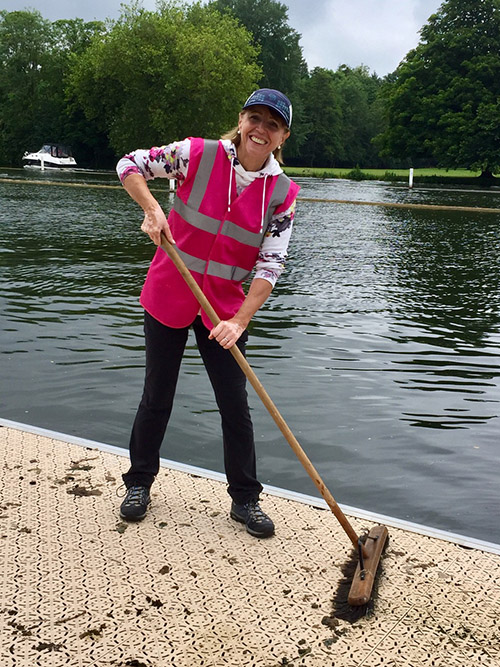
Covid-19 presented Jo with her final organisational challenge; “We were at the front of the queue after exiting the pandemic,” she said. Henley Women’s Regatta comes before Henley Royal Regatta, the Henley Swim and Henley Masters. Were it not for Jo’s success and proactivity in hosting meetings with different stakeholders and getting the green light for HWR’s Event Safety Management Plan, it’s possible that the subsequent events might not have taken place either.
“It’s hugely rewarding standing back and seeing the regatta running well,” she reflected. “That includes working with excellent volunteers and partnerships. They all contribute to putting on a successful event, which in turn provides a fabulous competitor experience that attracts people back year upon year. Good weather also helps.”
Without people like Jo who volunteer their time, energy and skills, beloved events such as Henley Women’s Regatta would not be possible. As competitors, it is important that we respect their hard work and do all we can to follow guidelines, whether that be boating times or requests not to ‘brand’ racks with club tape. Henley Women’s Regatta and all those associated have benefitted greatly from Jo’s seven years of service and her legacy will stand the test of time as the event grows sustainably in an effective framework.
How you can help
If you’re racing at HWR this year, do remember that any of the officials, including those in the site team’s distinctive pink tabards, will always appreciate a quick ‘thank you’ from competitors!
And if you’d like to volunteer in any role at HWR, you can sign up here.


